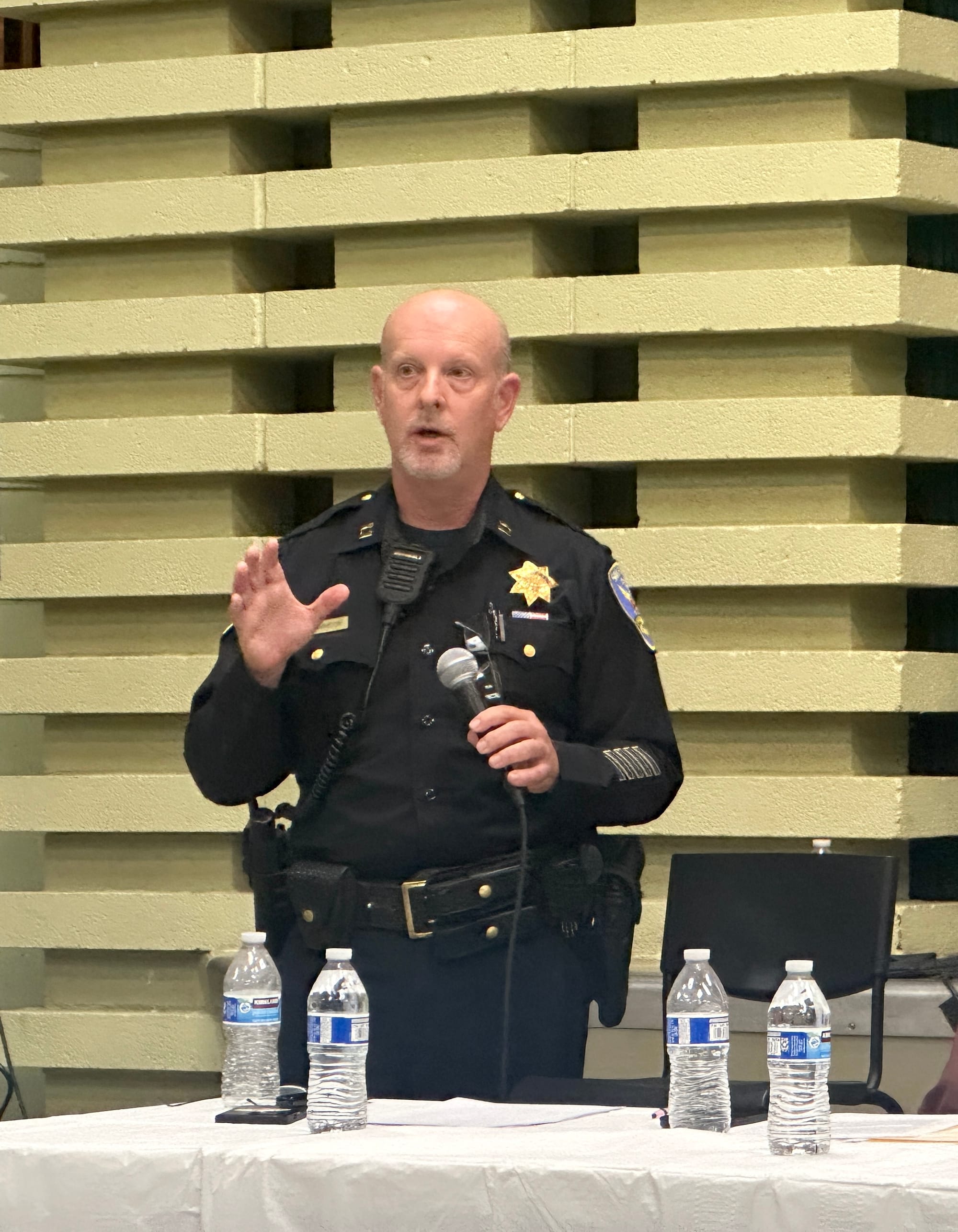🟧 Fake Turf Fight Flares Up // Ocean Avenue Intrigue
Plus: Mayor Daniel Lurie and Supervisor Myrna Melgar take resident questions.
The district attorney, police chief and other law enforcement leaders answered questions from west side neighbors on the heels of two killings.

More than 60 west side residents gathered Tuesday night to hear directly from San Francisco’s top law enforcement officials about crime.
The event, organized by Stop Crime SF and held at the County Fair building, comes on the heels of two fatal stabbings on Ocean Avenue.
A man was stabbed at a Muni boarding island at Ocean and Lee avenues in late July. In early September, a man was stabbed after an altercation on the median of Ocean Avenue and Junipero Serra Boulevard. Both died of their injuries in the hospital.
Despite improvements made in citywide crime rates, the incidents sparked serious safety concerns, especially for families raising children.
“Tonight was about us trying to reassure them that we are using every tool possible to make sure that we're addressing the crimes that are still occurring,” District Attorney Brooke Jenkins told The Light. “We know that we've made progress, but we do understand we have a ways to go.”
The meeting began with interim Police Chief Paul Yep acknowledging the dedication of the San Francisco Police Department’s rank-and-file officers in arresting the suspect accused of fatally stabbing Robert Paul Byrd II last month.
“I knew that we were going to be ultimately successful in finding that suspect,” Yep said. “I saw the dedication and the hard work that was going into this.”
The chief thanked Taraval Station Capt. Clayton Harmston, as well as SFPD’s ability to leverage drone technology for surveillance.

Both Yep and Jenkins underscored the city-wide 27% drop in crime rates despite a shortage of approximately 600 officers in the SFPD.
Steven Wong, a Sunset resident, asked the panel to address his children’s fears of walking to school after the stabbings took place. He asked the officials what data was available for crimes happening near schools, or if any programs existed to ensure children arrived safely at schools.
Jenkins responded that the city analyzes crime stats in communication with the school district, and mentioned the need to continue investing in Safe Passage programs that exist in neighborhoods such as the Tenderloin.
Paul Allen, a Corona Heights resident, said delivering public safety requires a unique approach depending on the neighborhood.
“The way they handle the Tenderloin obviously has to be different than the way they handle Stonestown,” Allen said.
Bill Totah, a retired SFPD officer who now works as a police ambassador at Stonestown, explained that due to store policies, security guards are not permitted to physically intervene in thefts.
“I won't rest until I don't have to ring a bell to get vitamins or deodorant or toothpaste or Tide pods,” Jenkins said. “We have got to get our city back to a place where people understand you will not be walking out of a store with items.”
Juveniles are responsible for many of the fights breaking out, as well as other crimes reported at Stonestown.
Katie Miller, chief probation officer for the San Francisco Juvenile Probation Department, said the number of juvenile arrests has gone down 82% in 25 years.
Jenkins described the need for kids to understand that law enforcement can also serve as a resource they can rely on.
Harmston, who is responsible for keeping the west side secure, had a plain explanation for how to keep fears at bay.
“People just needed that clarity on if there is a problem, and if there is what we're doing to address it, and just get the unvarnished, transparent truth of what's going on,” Harmston said.
We deliver neighborhood news, events and more every Thursday.